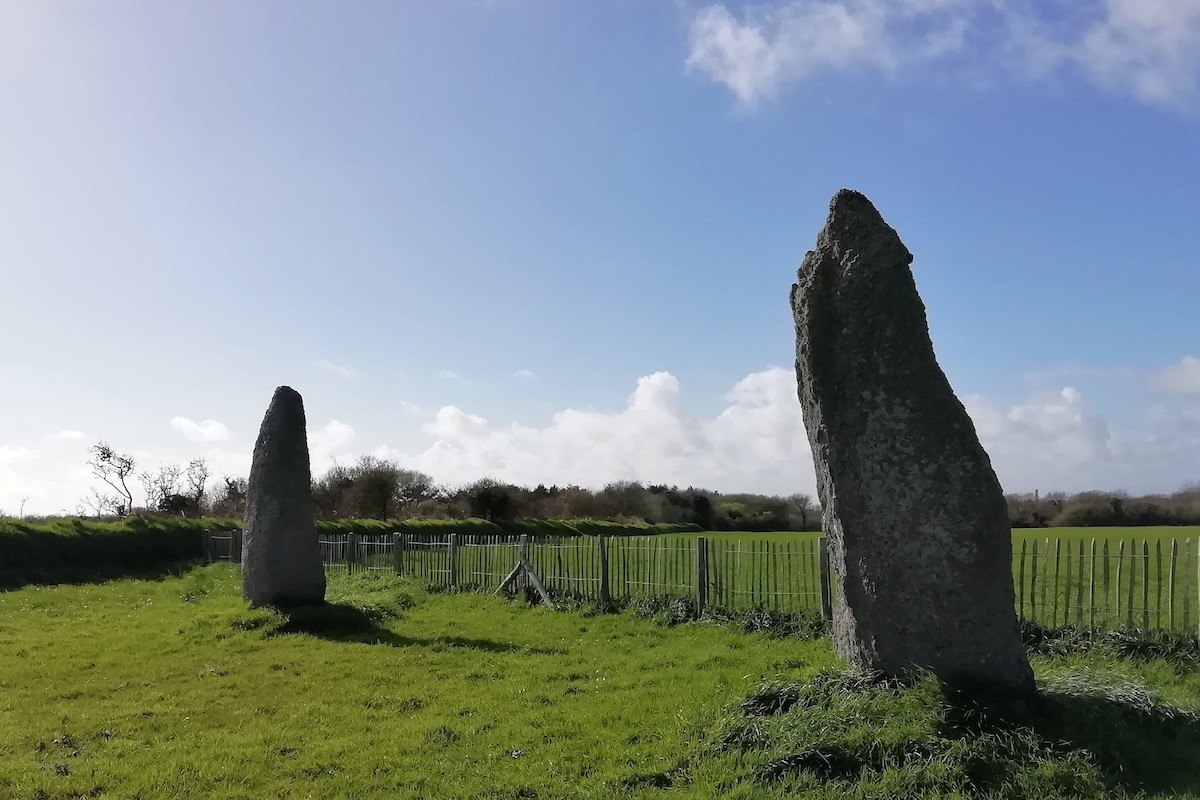The Iroise County area of Finistère is alive with giants, literally. They take the form of gargantuan granite menhirs that stand like sentinels guarding the coast. Some stand alone, others form rows, some are engraved while others are ‘dressed’ in that the surfaces have been painstakingly smoothed giving them an almost polished appearance.

The alignment of Saint-Denec is a row of menhirs located in the commune of
Porspoder, Finistère. It comprises of two stones about 9.5 m apart and are aligned
on a southwest/northeast axis. They sit up on the headland off the indented
coastline. The altitude is low, tapering up from sea level to 58 meters. Made from
local granite which contains pink feldspars known to be very resistant to alteration and susceptible to the most beautiful polish, though these are roughly hewn and differ from the other menhirs in the region.

Each stone is reputed to have a lying orthostat at its base, though I could only see
one in evidence. Further enquiry reveals that the other stone was removed by the
landowner for agricultural purposes. There is some speculation that these two
prostrate stones are fallen menhirs, though the jury is out. What is known is that the existing lying down stone contains two axe carvings.

There are numerous examples of axe carvings on megaliths in France and perhaps it was these carvings that protected this stone from the same fate as it’s brother stone. The north-eastern stone is 4.12 m high, 1.48 m wide, with a thickness of nearly 1 m at the base. This stone has been carefully bush-hammered to the southern side and is broken at the top. It appears to be slightly leaning but on closer inspection it is more a twist in the stone, as if the stone had scoliosis.

The second menhir stands 3.10 m high and has a width of 1 m and a thickness of
1.15 m at 1 m from the base. It appears to stand more upright and has a flat side and a distinct straight edge to it. This stone has the carved slab at its base. This slab appears to be too close to the erect monolith to ever have fallen and it is most likely that it was always on the ground.

The carved slab has the etchings facing skywards. These highly eroded sculptures representing two axes, have the sharp edge of the axe pointing to the right. The first axe is 46 cm high, the handle is slightly arched, with the blade measuring 24 cm and has a heel. The second axe is slightly larger (more than 50 cm), the handle is straight and the blade measures more than 20 cm with a less pronounced heel.

It is hard to believe that this pair of stones are considered the shorties of the other monoliths in the area. What they lack in stature they gain in curiousness. They differ to in that they do not have the same polished surfaces that the other stones have, and the carved axes also make them unique and mysterious. The sun shone radiantly on my skin when I visited. This site is now fenced off from agriculture and accessible from the road. I felt very privileged to be in their presence.
GPS : 48°29’49 N 4°44’39 W

